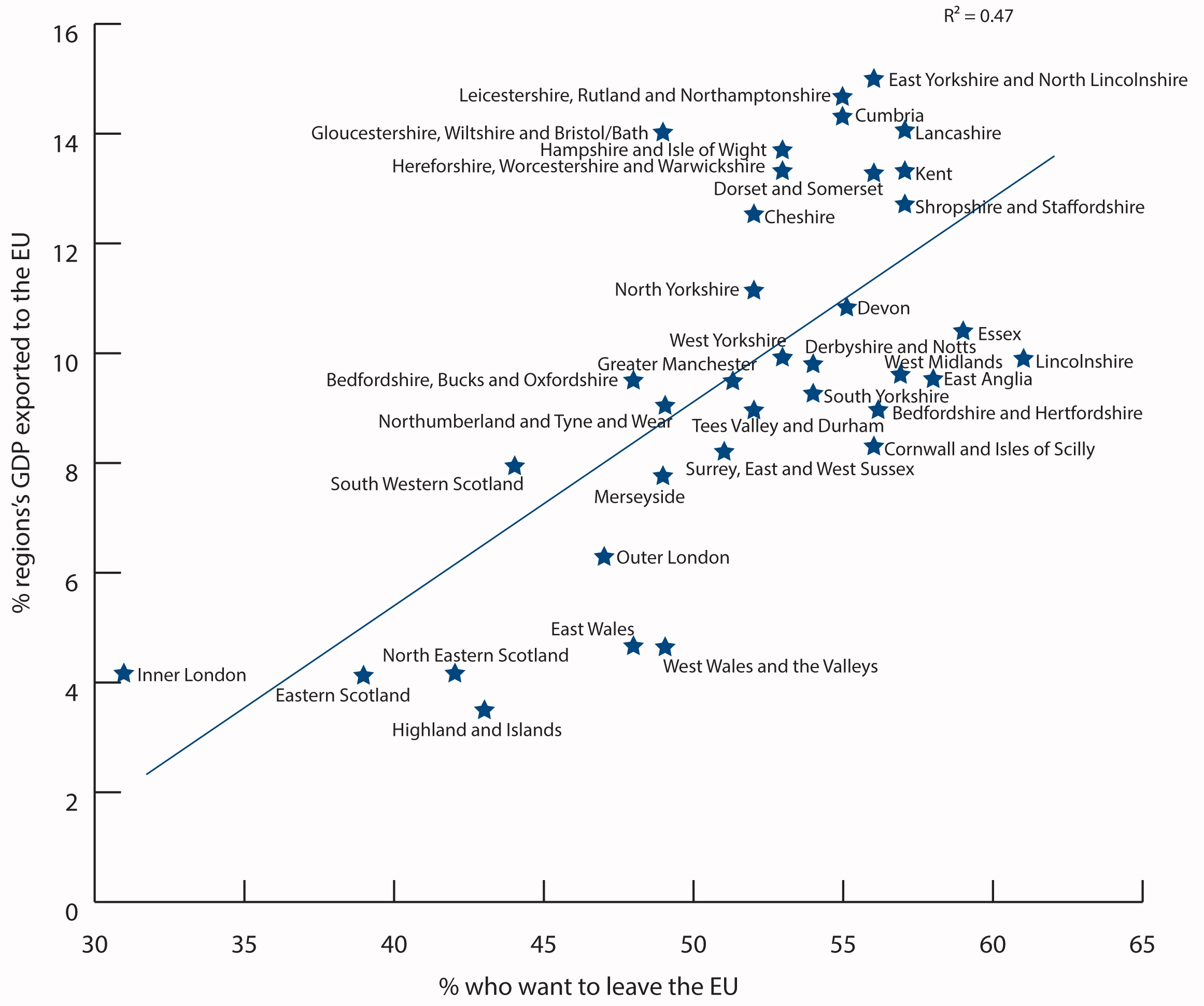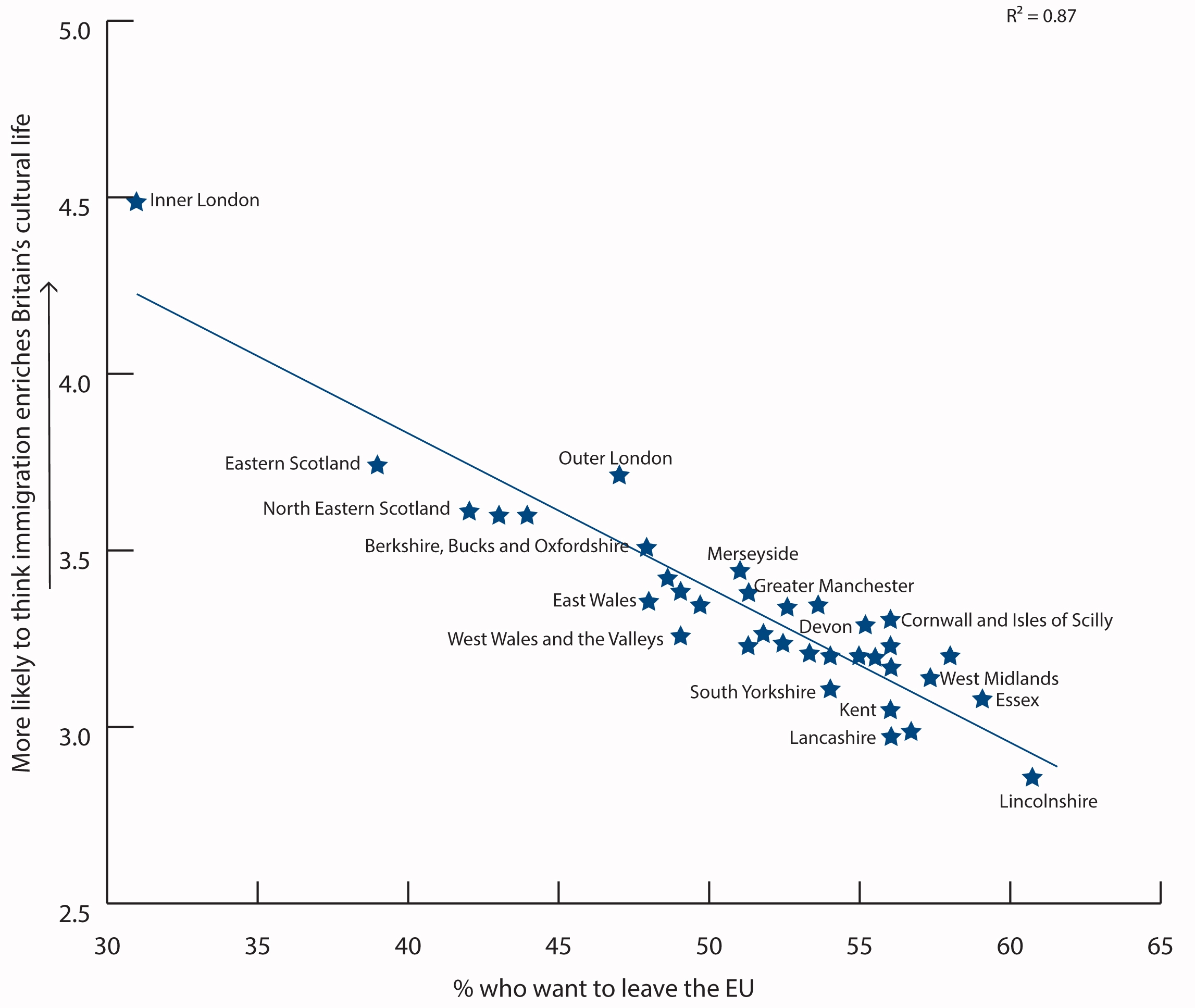
Brexiting yourself in the foot: Why Britain's eurosceptic regions have most to lose from EU withdrawal
The Leave camp has signalled that it is going to talk about immigration for the remainder of the referendum campaign. This is not surprising: Brexiters have struggled to counter the pro-Remain economic analysis from heavyweight institutions – the OECD, the Treasury, the Bank of England and the IMF, to name a few. A relentless focus on immigration keeps the public eye on the common (but erroneous) assumption that immigration depresses wages and piles pressure on public services. It also injects a pinch of identity and class politics into the campaign. Leave have portrayed Bremainers as rich Londoners who are out of touch – hence pro-Brexit employment minister Priti Patel’s comment that “It’s shameful that those leading the pro-EU campaign fail to care for those who do not have their advantages. Their narrow self-interest fails to pay due regard to the interests of the wider public.” In case you need reminding, David Cameron and George Osborne are both from wealthy London or Home Counties-based families and both went to expensive private schools in the London area (as did Boris Johnson and Nigel Farage.)
Leave’s anti-elite message resonates most strongly in regions outside of London, whose economies have been struggling since the 2008 crash. But the irony is that it is these regions, not London and its rich commuter belt, that have most to lose from leaving the EU.
Ironically, Leave’s anti-elite message resonates in UK regions that have most to lose from #Brexit
Chart 1 shows a positive correlation between a region’s level of economic integration with the EU and that region’s euroscepticism. The vertical axis, based on new data from the University of Groningen, shows the proportion of a region’s economic output which is sold to the rest of the EU – either in the form of exports, or indirectly, with domestic companies supplying goods and services to exporters. The horizontal axis is taken from the British Election Survey, which asks people how they would vote in the EU referendum and breaks down to a constituency level. The chart shows that London and Scotland, the most pro-EU areas of the UK, are less economically integrated with the EU than the UK average. Meanwhile, outside the prosperous South East, rural counties such as North Yorkshire and Dorset, and more urban ones, like West Yorkshire and Lancashire, are more integrated with the EU, and also tend to be more eurosceptic.
Chart 1. UK regions more economically integrated with the EU are more likely to be eurosceptic.

Sources: World Input-Output Database, University of Groningen, http://www.wiod.org/, 2010 data; Nick Vivyan and Chris Hanretty, ‘Estimating Constituency Opinion’, http://constituencyopinion.org.uk/data/, 2014 data.
The fact that London sells less to the EU will be rather surprising – especially to those who think the EU only benefits the ‘metropolitan elite’. There are three reasons why. First, London’s trade is more global. Typically, London sells around 10 percentage points less of its exports to the EU than other regions. This is because the services sector is less dependent on EU demand, and London and the South East are heavily oriented towards services. By contrast, the manufacturing, agriculture, mining and extraction, and utilities sectors are more skewed towards EU markets, and regions outside of the London commuter belt tend to be more specialised in these sectors.
Second, London’s economy is very large and diverse – a large factory in another region will make up a bigger proportion of its GDP. Therefore, every pound of exports emerging from London accounts for a smaller share of the capital’s economy than is the case elsewhere.
Third, London’s diverse economy allows the city to adjust and respond to shocks much more rapidly than other UK regions, as we have witnessed in the years since the 2008 economic crisis: London’s economy is growing while other regions continue to struggle. London is therefore both less dependent on the EU, and also more resilient to a post-Brexit shock than all other UK regions.
London is less dependent on the EU & more resilient to a post #Brexit shock than other UK regions
None of the usual arguments for why these regions are more eurosceptic closely match the data. Poorer regions tend to be more eurosceptic, but the relationship is weak – and if we take London out of the data, it almost disappears. The average age of a region’s population does not seem to make much difference. Education levels are a slightly better indicator – regions with more people who have some tertiary education tend to be less eurosceptic, but the correlation is not very strong. The best predictor by far is attitudes towards immigration. The British Election Study asked respondents ‘Do you think that immigration undermines or enriches Britain’s cultural life?’ and asked to respond on a 7 point scale – the lower on the scale, the more a respondent thought immigration undermines Britain’s cultural life. Citizens of regions where immigration is perceived as damaging are much more likely to vote for Brexit (see Chart 2).
Chart 2. Attitudes towards immigration and Brexit voting intention
Source: Nick Vivyan and Chris Hanretty, ‘Estimating Constituency Opinion’, http://constituencyopinion.org.uk/data/, 2014 data.
The irony is that these areas tend to have fewer immigrants than more pro-EU regions – and they have more to lose economically from Brexit, since their economies are more closely integrated with the EU. Therefore, Priti Patel is quite wrong to imply that the leaders of the Remain campaign are ignoring the economic interests of people living in the English shires. Quite the opposite. Rather, they are trying to encourage people to focus on their economic interests, not immigration. Immigration affects the day-to-day lives of people in many of these regions much less than people who live in England’s cities, while they have closer economic ties to the EU.
Eurosceptic UK regions tend to have fewer immigrants than more pro-EU regions do #Brexit
At a national level, the referendum debate is boiling down to a trade-off: lower immigration by leaving, or secure the economy by remaining. But for eurosceptic regions that trade-off does not exist: by voting to leave the EU, the denizens of these regions would shrink immigration to London and other cities – while hurting their own region’s economy.
John Springford, Centre for European Reform; Philip McCann, University of Groningen; Bart Los, University of Groningen; Mark Thissen, PBL Netherlands Environmental Assessment Agency.

Comments
Add new comment